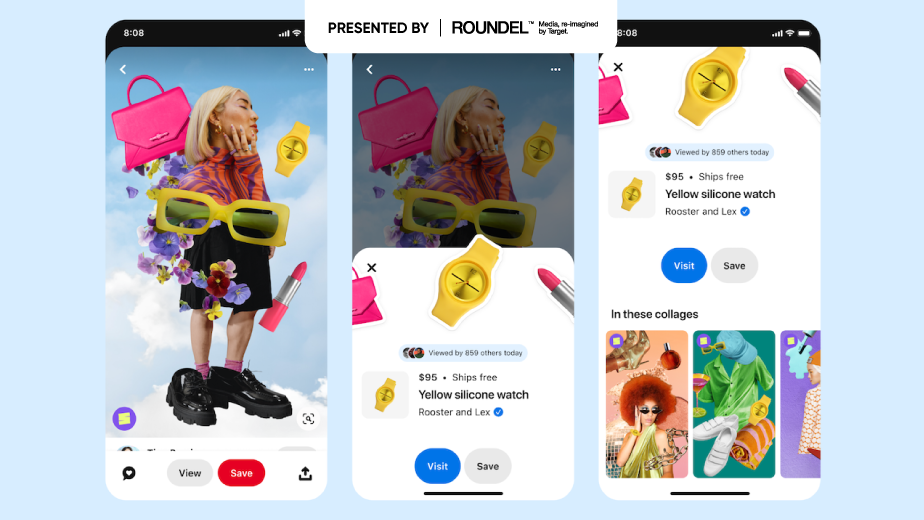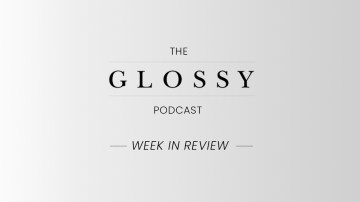At Shoptalk 2023 in Las Vegas, brands and platforms alike wrestled with the idea of discoverability. E-commerce has become so saturated, and customer acquisition costs have gotten so high, that one of the biggest challenges facing brands today is getting noticed amid the sea of other brands.
One way they’re solving for that is through social commerce. Pinterest CEO Bill Ready announced at Shoptalk that Shuffles — the Gen Z-focused collage-making app Pinterest launched in November — will be integrated into Pinterest’s main shopping experience. That means customers can make collages of different shoppable products, like assembling an outfit with four different products from different brands, and then buy them all straight through Pinterest.
Ready said Pinterest has seen significant growth in interest from brands in the platform’s shopping tools. In fact, there’s been a 66% increase in brands uploading shoppable catalogs to Pinterest and a 70% increase in shoppable products globally over the last year. That’s had a halo effect on Pinterest’s ad business, as well. It’s seen double-digit growth in ad revenue over the last two quarters.
Social commerce has the potential to be a full-funnel service, offering both top-of-funnel discoverability and ushering customers all the way to the bottom of the funnel for the final purchase, Ready said. But other platforms’ attempts at social commerce have run into difficulties, mainly because their audiences are not always coming to the service looking to shop, he said.
“We have 450 million users on Pinterest, over half of whom say they come to Pinterest specifically looking to shop. So the intent is there,” Ready said. “Most of social media is lean-back entertainment. You’re just there to see pictures of your friends or watch funny videos. You might not be there to shop. And it’s really hard to get people to shift modes.”
But even those platforms that are known for their lean-back entertainment are getting in on the social commerce trend. On the show floor of Shoptalk, TikTok was showcasing its livestream shopping capabilities with brands like E.l.f. Cosmetics and Pacsun. While TikTok has fully launched live shopping in the U.K., the feature is still in early test mode for the U.S.
The test is part of TikTok’s larger TikTok Shop initiative, which entered its alpha phase in November of last year and is still in the experimentation phase, according to Sandie Hawkins, gm of U.S. e-commerce at TikTok. But the platform is hoping that big brands like Pacsun — which have large followings on TikTok and among Gen Z, in general — can help build up TikTok’s shopping credibility ahead of an official full launch of the product.
“We are always looking at ways to enhance our community’s experience, and we regularly test new features that inspire creativity, bring joy and innovate the TikTok experience,” Hawkins said. “Brands on TikTok have found a creative outlet to authentically connect with audiences, and we’re excited to experiment with new commerce opportunities that enable our community to discover and engage with what they love.”
Imran Khan, co-founder and CEO of Verishop, said another problem with social commerce is the lack of curation on most platforms. While Verishop is more marketplace than social media platform, it bills itself as a place to discover new brands through its partnerships with influencers and its regular livestream shopping events.
“Facebook and other platforms have no curation,” Khan said. “Anyone can set up an ad. On Verishop, every brand has been vetted, and that helps us establish credibility among customers.”
Khan used the example of engaging with a product on Instagram — say, a watch, for example. That will get you inundated with ads for similar products from hundreds of brands, with no way of telling how they compare to each other.
Verishop has hosted livestreams since 2021. Khan said that the streams are actually more valuable after the fact. While a few thousand people may tune in when a stream is live, those clips get saved, cut up, and posted on Verishop’s site and mobile app to aid in discovery later, as well. The majority of the engagement with the live content comes from these post-stream clips. (TikTok’s live shopping feature offers a similar option for cutting and saving clips from streams for later use.)
“Advertising 101 is that customers need to see you in multiple places to build trust,” Khan said. “One of the major problems brands have with discoverability right now is that they’re too saturated in one channel. They’re too dependent on Facebook. My advice is to take the last 20% of the dollars you’re spending on Facebook and put that toward other channels.”




